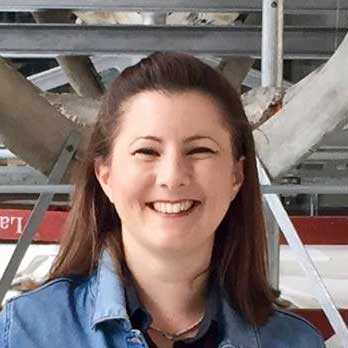To celebrate national Volunteer Week we’ve been speaking to volunteers across the University of Cambridge Museums, to find out why they give their time to support us.
Over the past 5 years Phillipa Grimstone has volunteered on a number of projects across the University of Cambridge Museums, from Summer at the Museums to family learning at the Fitzwilliam Museum. Phillipa explains why she volunteers, giving something back to all of the museums she’s enjoyed over the years.
I’ve always loved museums. I have visited museums and heritage sites all over the world. But, it was one place, Kettle’s Yard, that got me actively involved five years ago in May 2012. I wanted to learn more about it, and repay some of the pleasure that it has given me.
Pirate ships
My first activities were serving drinks at private views, possibly not quite what I was envisaging, but I got to observe how such events are run, and hear some interesting talks by curators and artists. Then, I started helping with Studio Sundays (drop-in art sessions for families, run by an artist educator and a couple of volunteers). My first session involved making sailing boats, linking in with an Alfred Wallis exhibition. Most families made sailing boats, but one little boy insisted that we must make a steam liner with several decks, and another a pirate ship. Adaptability and lateral thinking are sometimes needed.
I was hooked; it’s wonderful to see families working together, to help them achieve their ideas and sometimes even have a go myself. I’ve supported many family sessions since, but another that stands out was where one wall and the floor were covered with paper, and trays of paint set on the floor. Everyone had to create their own painting implement from sticks and sponges and all kinds of other materials. No conventional ways of making marks on paper were allowed. Soon shoes and socks were coming off, and footprints and handprints were added to the mix. At Kettle’s Yard, I’ve also helped with adult education sessions, school visits, stewarding at their concerts, their outreach events in north Cambridge, and with large events such as the Big Weekend and Castle Hill Open Day.
Whale song
Volunteering at Kettle’s Yard led me to think about how other museums do things. I joined the Whipple Museum. Then, the Museum of Zoology’s ‘Ocean Song’ project. I enjoy singing, and was curious to see how the public could be engaged in the creation of a ‘symphony’ for the finback whale. Workshops involved a talk on how a number of sea creatures produce their sounds, and then audience participation, combining imitating those sounds with sea shanties and words to create inventive soundscapes. Part of my role was stewarding, but also enthusiastic participation to encourage others. I’ve since helped with a couple of Bioblitzes, where species found at a particular site are counted over a couple of days. An impressive number of tours and activities are put on. Volunteers are given a variety of duties from providing information to assisting with tours and activities (nature-related and craft). They are great opportunities to increase your knowledge. I’ve assisted with pond-dipping, bee, butterfly, lichen and spider walks, and even dissected owl pellets. The museum also gets involved in the Cambridge Science Festival, and other big events. It has actually been closed for building work during my involvement with it, but has still offered a lot of opportunities. I’m really looking forward to seeing how its activities develop in its new home.
Origami butterflies
Most recently, I’ve joined the families team at the Fitzwilliam Museum. I was really interested to see how its approach would compare with that of Kettle’s Yard. It could have been ‘more of the same’, two art museums doing art sessions, but I’ve continued to learn about how family activities can be organised and promoted, and how staffing levels, museum size, and the nature of the collections influence what is possible. Highlights so far have been helping families to create decorated initials during last year’s Family Art Week (both the work produced, and the huge numbers who turned up), a visit by the Britten Sinfonia Academy, and Twilight at the Museums, especially the workshops run by an animator. I’ve also learned to make origami butterflies, a surprisingly useful skill.
Why do I continue to volunteer? It’s a mixture of the pleasure I get from helping others to engage with museums and their collections, a sense of community gained from volunteering with others, the increased knowledge I’ve acquired of museum collections and related subjects, and a feeling of satisfaction that I’ve been a part of enabling projects that otherwise might not have been possible. I’ve also no doubt gained some additional skills for my CV, which is always useful, even if it was not why I started volunteering.
Why not consider volunteering with the University of Cambridge Museums and Botanic Garden yourself? It’s a fun way to meet new people, broaden your knowledge, and gain great experience, all working flexibly around your schedule and how much time you are able to give. Visit the University of Cambridge Museums website for more information and ways to apply!







